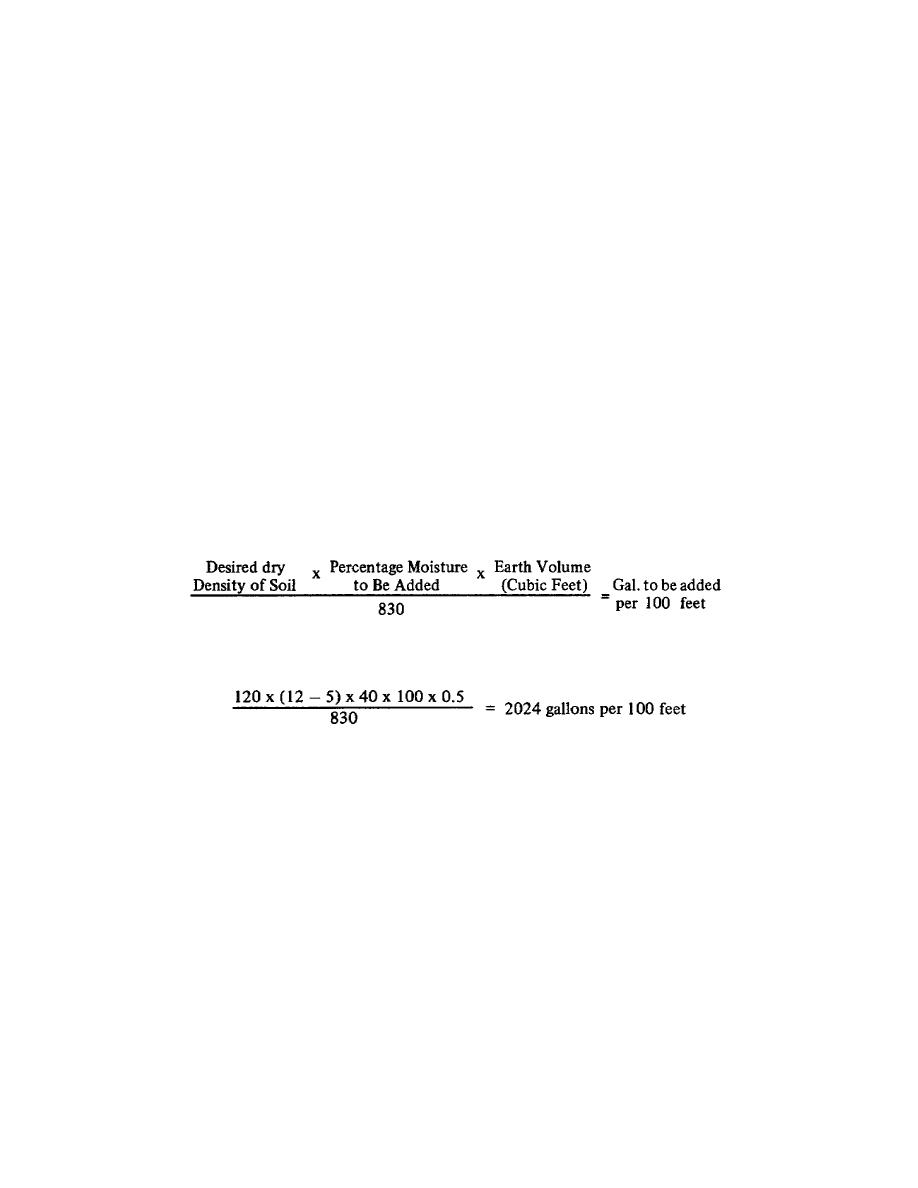
Lesson 4/Learning Event 5
Learning Event 5
IDENTIFY CORRECTIVE ACTIONS FOR DISCREPANCIES
Discrepancies between the moisture and density in-place and the desired moisture and density ranges
probably mean that you will have to take corrective action. Your decision will depend on the overall
series of test results as well as economic considerations. If large variations occur, they may indicate a
situation which could lead to differential settlement. In such a case, corrective action is necessary.
However, if you have tested every 100 feet and one test varies slightly, corrective action is not
economically logical.
Determining How Much Water Must be Added for Optimum Moisture
If the moisture content of the soil is less than optimum, the amount of water which must be added for
efficient compaction generally is computed in gallons per 100 feet of length (station). The computation
is based upon the dry weight of soil contained in a compacted layer. For example, assume that the soil is
to be placed in layers 6 inches in compacted thickness at a dry unit weight of 120 pounds per cubic foot.
The moisture content of the soil is determined to be 5 percent, while the optimum moisture content is 12
percent. Assume that the strip to be compacted is 40 feet wide. Compute the amount of water which
must be added per 100-foot station to bring the soil to optimum moisture. The following formula will
apply:
Substituting in the above formula from the conditions given:
If either drying conditions or rain conditions exist at the time work is in progress, it may be advisable to
either add to or reduce this quantity by up to 10 percent.
Determining Density Adjustments
Density determinations are made in the field by measuring the wet weight of a known volume of
compacted soil as described earlier. The sample to be weighed is taken from a roughly cylindrical hole
which is dug in the compacted layer. The volume of the hole may be determined by one of several
methods, including the use of heavy oil of known specific gravity, the rubber balloon density apparatus,
water which is poured into a thin sheet of rubber which lines the inside of the hole, and calibrated sand.
Knowing the wet weight and the volume, the unit wet weight may then be calculated.
96


 Previous Page
Previous Page
